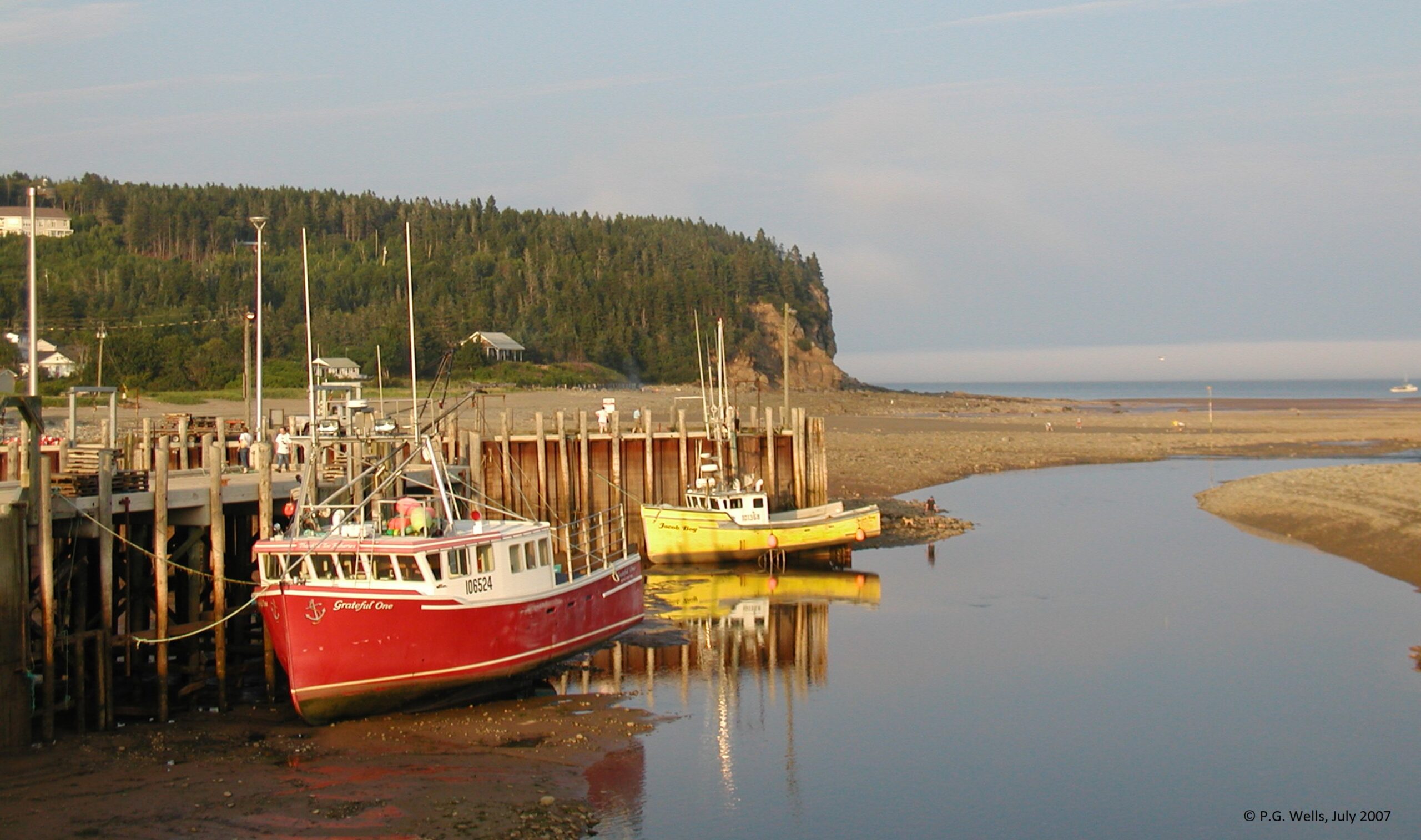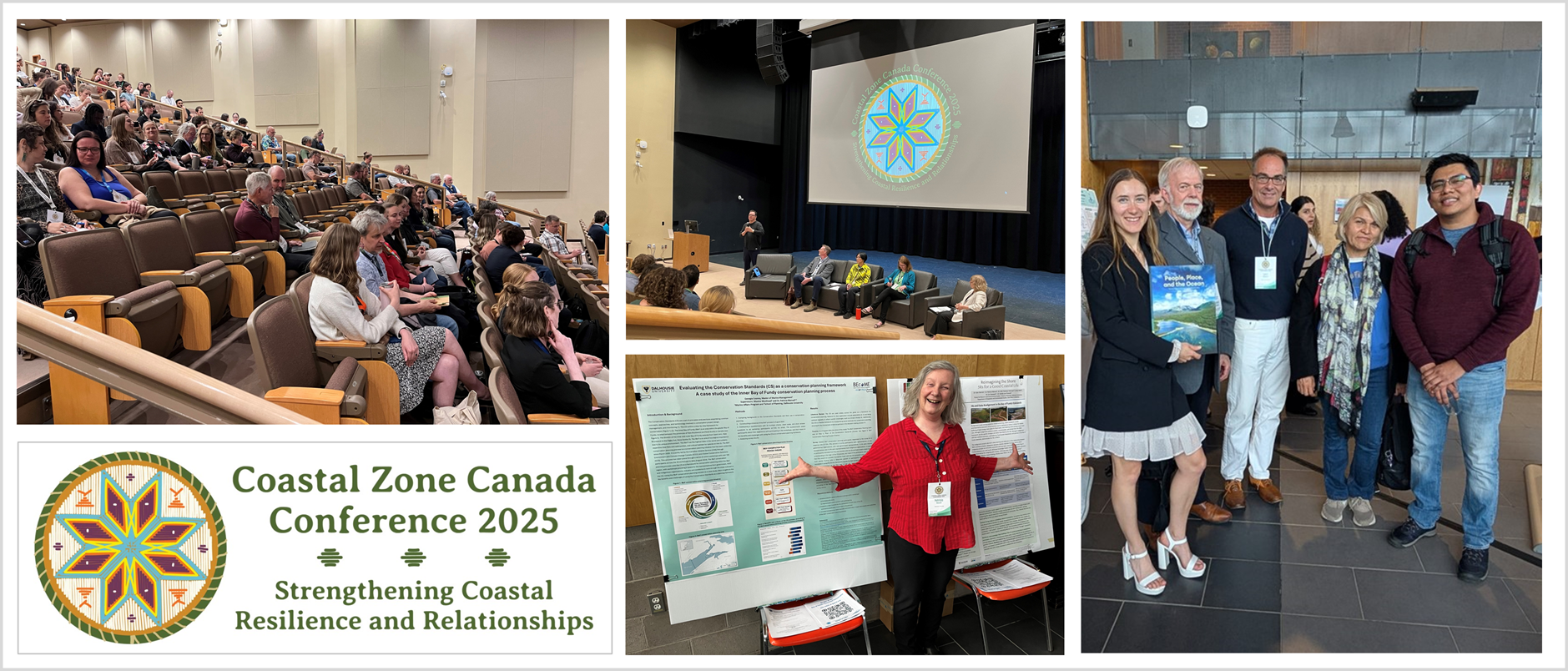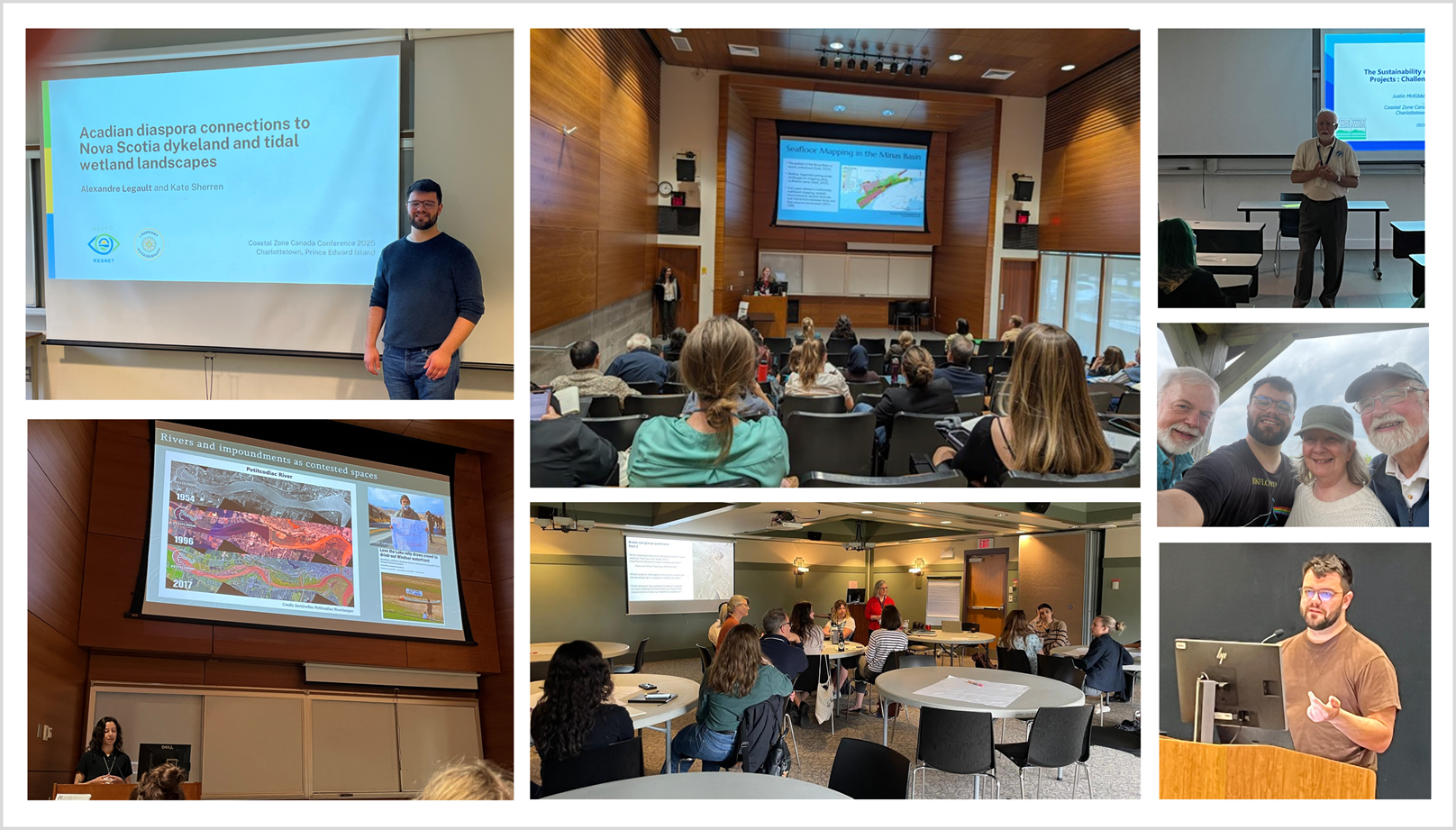Canada is a country defined by its coasts. Spanning over 243,000 kilometers along the Atlantic, Arctic, and Pacific oceans, the country’s coastline is the longest in the world. Coastal areas have been crucial to marine and human life for millennia. However, in recent decades, these areas have experienced extensive environmental and human pressures that place coastal communities and the country at large at risk. Today, Canadians witness the effects of climate change on the country’s coasts on a daily basis.
For over 30 years, the Coastal Zone Canada Association has organized biennial conferences to consider and address concerns about coastal environments from the perspective of integrated coastal zone management, which includes “understanding and management of inter-related human activities and natural environments, physical processes, and living and non-living resources within the coastal zone” (CZC website). The 16th Coastal Zone Canada conference convened on the campus of the University of Prince Edward Island, Charlottetown, on 8-12 June 2025. Over 450 registrants from across Canada and around the world met to report on research, management practices, and community initiatives, and to consider ideas and actions to address coastal issues. With an overall theme of “Strengthening Coastal Resilience and Relationships,” the conference featured many plenary sessions, oral presentations, posters, workshops, and tours. From the opening keynote address by Dr. A.R. Siders, Director of the Mangone Climate Change Science and Policy Hub and Associate Professor in the University of Delaware’s School of Public Policy and Administration, to the closing plenary panel, a sense of concern, urgency, and optimism pervaded the conference. The presence of a large number of early career researchers and managers and members of First Nations communities contributed to this atmosphere.
The Dalhousie University Environmental Information: Use and Influence and Marine Spatial Planning research groups were well represented at this conference with 15 oral presentations, posters, and workshop sessions (see abstracts below). These graduate students and faculty members came away from the conference with the following observations.
 Most Interesting: “What stood out most was the emphasis on building relationships and fostering partnerships across disciplines, knowledge systems, and communities. The event’s interactive format—with Q&A sessions following presentations and idea-generating workshops—encouraged engagement and allowed the participants to contribute directly to ongoing projects. For example, the coastal access workshop, led by Dalhousie University, encouraged participants to help shape the future direction of ongoing research, with the exciting opportunity to become co-authors on a forthcoming paper.” Questions: “Throughout the conference, I was impressed by the many perspectives shared. Sessions ranged from dune restoration and emergency response to discussions on governance and values in stewardship. These conversations prompted me to reflect on how we define and measure ‘recovery’ and ‘success’ in coastal management. Whose values shape these benchmarks, and how do we ensure they evolve with changing community needs? How can we best include diverse knowledge systems, and what practical steps are needed to centre relationships between people, land, and sea in our work? Perhaps some answers to these questions lie in the words of Dr. Sherry Pictou, who reminded us that ‘we need to heal before we conserve,’ emphasizing that healing our relationship with the land and sea—and each other—should be prioritized.” Contribution: “I was privileged to contribute to the conference by participating in workshops, chairing the Ocean and Coastal Stewardship session, and presenting my master’s research. The feedback I received after my presentation was invaluable, and I left feeling more connected to the community of coastal carers and researchers.”
Most Interesting: “What stood out most was the emphasis on building relationships and fostering partnerships across disciplines, knowledge systems, and communities. The event’s interactive format—with Q&A sessions following presentations and idea-generating workshops—encouraged engagement and allowed the participants to contribute directly to ongoing projects. For example, the coastal access workshop, led by Dalhousie University, encouraged participants to help shape the future direction of ongoing research, with the exciting opportunity to become co-authors on a forthcoming paper.” Questions: “Throughout the conference, I was impressed by the many perspectives shared. Sessions ranged from dune restoration and emergency response to discussions on governance and values in stewardship. These conversations prompted me to reflect on how we define and measure ‘recovery’ and ‘success’ in coastal management. Whose values shape these benchmarks, and how do we ensure they evolve with changing community needs? How can we best include diverse knowledge systems, and what practical steps are needed to centre relationships between people, land, and sea in our work? Perhaps some answers to these questions lie in the words of Dr. Sherry Pictou, who reminded us that ‘we need to heal before we conserve,’ emphasizing that healing our relationship with the land and sea—and each other—should be prioritized.” Contribution: “I was privileged to contribute to the conference by participating in workshops, chairing the Ocean and Coastal Stewardship session, and presenting my master’s research. The feedback I received after my presentation was invaluable, and I left feeling more connected to the community of coastal carers and researchers.”
~ Jumanah Khan, Master of Marine Management graduate, Dalhousie University
 Most Interesting: “The most fascinating aspect of the conference was its youthful audience. There were so many graduate students and early-career professionals that I couldn’t help but realize it is now up to my generation to take on leadership roles. Our mentors did everything they could to help us, and now it’s our turn. As a classical musician, I used to perform for audiences of late-career professionals and retirees. After all, attending a classical music concert isn’t cheap. Presenting to such an energetic and driven audience was thus quite a shock. Questions: “The conference prompted me to question several of the theoretical frameworks that I regularly use. Is the ecosystem service framework the most effective way to communicate the values of nature? Does knowledge exchange rely on more fundamental informational interactions? What are the challenges of using pluralistic methodologies in decision-making? I’m not entirely sure, but I now have at least a few leads.” Contribution: “At the conference, I gave oral presentations about two projects: the results of my Master of Resource and Environmental Management (MREM) project and the research design of my Master of Information (MI) thesis. I hope to publish the first part of my MREM project soon and am looking forward to spending more time working on my MI thesis.”
Most Interesting: “The most fascinating aspect of the conference was its youthful audience. There were so many graduate students and early-career professionals that I couldn’t help but realize it is now up to my generation to take on leadership roles. Our mentors did everything they could to help us, and now it’s our turn. As a classical musician, I used to perform for audiences of late-career professionals and retirees. After all, attending a classical music concert isn’t cheap. Presenting to such an energetic and driven audience was thus quite a shock. Questions: “The conference prompted me to question several of the theoretical frameworks that I regularly use. Is the ecosystem service framework the most effective way to communicate the values of nature? Does knowledge exchange rely on more fundamental informational interactions? What are the challenges of using pluralistic methodologies in decision-making? I’m not entirely sure, but I now have at least a few leads.” Contribution: “At the conference, I gave oral presentations about two projects: the results of my Master of Resource and Environmental Management (MREM) project and the research design of my Master of Information (MI) thesis. I hope to publish the first part of my MREM project soon and am looking forward to spending more time working on my MI thesis.”
~ Alexandre Legault, Master of Resource and Environmental Management and Master of Information student, Dalhousie University
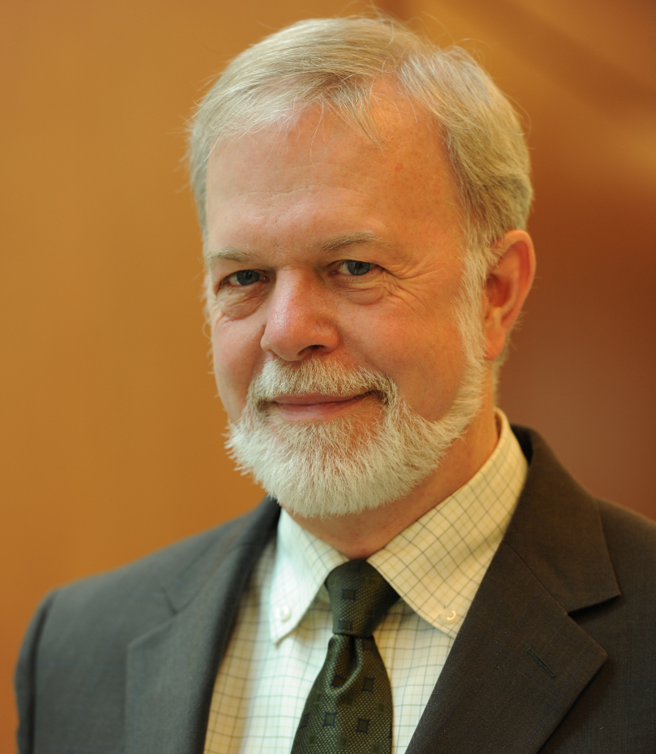 Most Interesting: “The sense of urgency about coastal issues, particularly due to the effects of climate change, coupled with the energy and collective interest in addressing those issues stood out in my mind. The multidisciplinary perspectives of participants (both researchers and practitioners) was a welcomed feature of this conference.” Questions: “The interesting questions in the Q&A period following my oral presentation remained with me as they raised relevant and legitimate concerns about the communication of research and its uptake in policy and practice. A question about what easy communication steps could the conference attendees take to address the science communication concern warranted more discussion than the limited time of the conference session and I wondered whether my response was adequate. I suggested that giving attention to speaking in the language of audiences (of one person or many) is important. But, relationships with policy and decision makers can also be important. Trust in both the speaker and the information matters.” Contribution: “As the lead author, I presented one paper, and I was a co-author with faculty and graduate students on two others. I am discovering as I continue to conduct research about science-policy interface questions that I also serve as a mentor to younger researchers, which happened repeatedly throughout the conference.”
Most Interesting: “The sense of urgency about coastal issues, particularly due to the effects of climate change, coupled with the energy and collective interest in addressing those issues stood out in my mind. The multidisciplinary perspectives of participants (both researchers and practitioners) was a welcomed feature of this conference.” Questions: “The interesting questions in the Q&A period following my oral presentation remained with me as they raised relevant and legitimate concerns about the communication of research and its uptake in policy and practice. A question about what easy communication steps could the conference attendees take to address the science communication concern warranted more discussion than the limited time of the conference session and I wondered whether my response was adequate. I suggested that giving attention to speaking in the language of audiences (of one person or many) is important. But, relationships with policy and decision makers can also be important. Trust in both the speaker and the information matters.” Contribution: “As the lead author, I presented one paper, and I was a co-author with faculty and graduate students on two others. I am discovering as I continue to conduct research about science-policy interface questions that I also serve as a mentor to younger researchers, which happened repeatedly throughout the conference.”
~ Bertrum H. MacDonald, Professor of Information Management (Emeritus), Dalhousie University
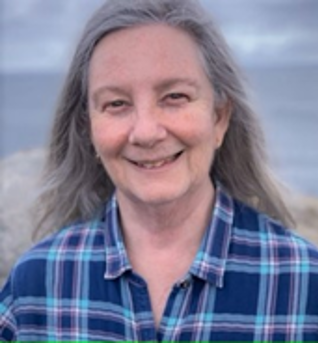 Most Interesting: “For me the interdisciplinarity of engineering, natural and social sciences, management, and arts, along with academics, practitioners, community members including from Indigenous and non-Indigenous organizations all coming together to share perspectives, experiences, and knowledge of the coast was most interesting. From a program perspective, organizing many sessions around a problem—like accelerated coastal erosion—and hearing approaches to understanding it and/or managing it from different perspectives and disciplines was effective. The sessions combining coastal engineers, citizen scientists, planners, and ecologists were interesting. In addition, the demographic of the participants is clearly changing. Recently, this conference series has shifted to younger attendees, consisting of many early career professionals and students in all disciplines, which is great for carrying forward interest in and action for healthy coasts.” Questions: “I left the conference pondering several questions: “How can we disrupt the unhelpful, counterproductive and frequently destructive politization of the coast? How can we achieve a better coastal life, working with rather than against coastal processes? How do we create a coastal commons?” Contribution: “I was a member of the Conference Scientific Program Committee (representing the Coastal Zone Canada Association board from the Atlantic region). I co-organized a full afternoon workshop on coastal access, I presented two posters, and I was a co-author on several other presentations. This conference provided lots of networking opportunities. As a ‘late career’ participant, I helped the early career folks and students make connections.”
Most Interesting: “For me the interdisciplinarity of engineering, natural and social sciences, management, and arts, along with academics, practitioners, community members including from Indigenous and non-Indigenous organizations all coming together to share perspectives, experiences, and knowledge of the coast was most interesting. From a program perspective, organizing many sessions around a problem—like accelerated coastal erosion—and hearing approaches to understanding it and/or managing it from different perspectives and disciplines was effective. The sessions combining coastal engineers, citizen scientists, planners, and ecologists were interesting. In addition, the demographic of the participants is clearly changing. Recently, this conference series has shifted to younger attendees, consisting of many early career professionals and students in all disciplines, which is great for carrying forward interest in and action for healthy coasts.” Questions: “I left the conference pondering several questions: “How can we disrupt the unhelpful, counterproductive and frequently destructive politization of the coast? How can we achieve a better coastal life, working with rather than against coastal processes? How do we create a coastal commons?” Contribution: “I was a member of the Conference Scientific Program Committee (representing the Coastal Zone Canada Association board from the Atlantic region). I co-organized a full afternoon workshop on coastal access, I presented two posters, and I was a co-author on several other presentations. This conference provided lots of networking opportunities. As a ‘late career’ participant, I helped the early career folks and students make connections.”
~ Patricia Manuel, Professor of Planning (retired), Dalhousie University
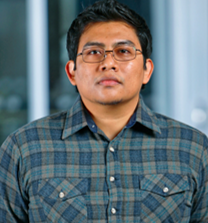 Most interesting: “Identifying the most significant aspects of the conference is challenging due to the relevance and urgency of all the topics addressed, particularly considering the multidimensional systemic crisis—encompassing environmental, socioeconomic, and governance dimensions— that currently affects marine and coastal ecosystems. Because of my research, I attended presentations addressing marine governance and the application of information technologies for marine and coastal management. Approaches including citizen science and integration of local knowledge in decision-making processes were particularly interesting. Learning about initiatives developed in different regions of Canada in this domain was encouraging, as well as exposure to innovative methodologies and technologies applied to these processes. The workshops emerged as an exceptionally valuable format, facilitating meaningful learning and fostering critical reflection among participants. The facilitators used interactive tools such as Mentimeter, which was effective in stimulating discussion and promoting active engagement. Among the novel topics that captured my attention was the application of AI for ocean exploration and marine conservation.” Questions: “The conference design fostered an environment for reflection. The presentations on projects developed across Canada prompted questions about the adaptability and applicability of these advances within the specific context of Nova Scotia. Similarly, the nature of the presentations and workshops led me to consider how this new information might be integrated into my current research and potentially strengthen my work. Specifically, I reflected on the applicability of the methods and tools employed by the workshop facilitators to my future research.” Contribution: “Compared to the 2023 CZC conference held in Victoria, this year’s conference featured fewer sessions dedicated to Marine Spatial Planning (MSP). In this context, I believe my research on local stakeholder participation in MSP helped to address this gap and positioned this important topic within an appropriate forum where it can achieve greater resonance and impact.”
Most interesting: “Identifying the most significant aspects of the conference is challenging due to the relevance and urgency of all the topics addressed, particularly considering the multidimensional systemic crisis—encompassing environmental, socioeconomic, and governance dimensions— that currently affects marine and coastal ecosystems. Because of my research, I attended presentations addressing marine governance and the application of information technologies for marine and coastal management. Approaches including citizen science and integration of local knowledge in decision-making processes were particularly interesting. Learning about initiatives developed in different regions of Canada in this domain was encouraging, as well as exposure to innovative methodologies and technologies applied to these processes. The workshops emerged as an exceptionally valuable format, facilitating meaningful learning and fostering critical reflection among participants. The facilitators used interactive tools such as Mentimeter, which was effective in stimulating discussion and promoting active engagement. Among the novel topics that captured my attention was the application of AI for ocean exploration and marine conservation.” Questions: “The conference design fostered an environment for reflection. The presentations on projects developed across Canada prompted questions about the adaptability and applicability of these advances within the specific context of Nova Scotia. Similarly, the nature of the presentations and workshops led me to consider how this new information might be integrated into my current research and potentially strengthen my work. Specifically, I reflected on the applicability of the methods and tools employed by the workshop facilitators to my future research.” Contribution: “Compared to the 2023 CZC conference held in Victoria, this year’s conference featured fewer sessions dedicated to Marine Spatial Planning (MSP). In this context, I believe my research on local stakeholder participation in MSP helped to address this gap and positioned this important topic within an appropriate forum where it can achieve greater resonance and impact.”
~ Daniel Martinez Calderon, Interdisciplinary PhD student, Dalhousie University
 Most interesting: “I was most interested in hearing from so many different voices. The conference was very interdisciplinary, and in many sessions, speakers with different disciplinary expertise spoke about similar topics. It was very engaging, and helped me think about different topics, such as nature-based solutions, coastal access, and incorporating values in management, from new perspectives.” Questions: “The conference prompted a lot of questions. One of the big ones was how can we connect the more abstract concepts of ‘climate change’ and ‘climate change impacts,’ with the every-day lived experiences of coastal communities. Dr. Siders touched on this question in her keynote talk, driving home the importance of urgency and realism with hope for a better future. Something else I’ve been thinking about since the conference is how can we, as researchers and practitioners, learn from one another to strengthen the proposals and ideas we bring into, or co-create, with coastal communities and stakeholders to address big issues like aging coastal infrastructure, rising water levels, and increasing floods. At a diverse conference like CZC the disciplinary silos don’t feel quite as tall, which made me hopeful about future opportunities to collaborate across disciplines.” Contribution: “I presented some of the findings from my dissertation research, exploring support for removing barriers across tidal rivers in the Bay of Fundy. I was in a session called, ‘Local Voices and Leadership in Stewardship’ with other researchers considering local perspectives for plastic and oil spill contamination. While our areas of study were very different, I appreciated being in this group because my fellow presenters were also focused on integrating local knowledge into their research.”
Most interesting: “I was most interested in hearing from so many different voices. The conference was very interdisciplinary, and in many sessions, speakers with different disciplinary expertise spoke about similar topics. It was very engaging, and helped me think about different topics, such as nature-based solutions, coastal access, and incorporating values in management, from new perspectives.” Questions: “The conference prompted a lot of questions. One of the big ones was how can we connect the more abstract concepts of ‘climate change’ and ‘climate change impacts,’ with the every-day lived experiences of coastal communities. Dr. Siders touched on this question in her keynote talk, driving home the importance of urgency and realism with hope for a better future. Something else I’ve been thinking about since the conference is how can we, as researchers and practitioners, learn from one another to strengthen the proposals and ideas we bring into, or co-create, with coastal communities and stakeholders to address big issues like aging coastal infrastructure, rising water levels, and increasing floods. At a diverse conference like CZC the disciplinary silos don’t feel quite as tall, which made me hopeful about future opportunities to collaborate across disciplines.” Contribution: “I presented some of the findings from my dissertation research, exploring support for removing barriers across tidal rivers in the Bay of Fundy. I was in a session called, ‘Local Voices and Leadership in Stewardship’ with other researchers considering local perspectives for plastic and oil spill contamination. While our areas of study were very different, I appreciated being in this group because my fellow presenters were also focused on integrating local knowledge into their research.”
~ Keahna Margeson, Interdisciplinary PhD student, Dalhousie University
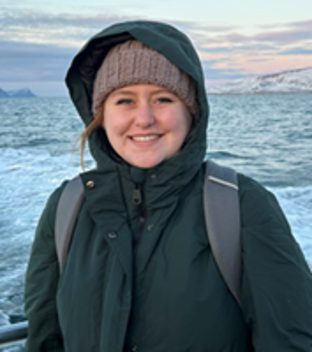 Most interesting: “I left the Coastal Zone Canada Conference feeling excited and energized by the passion, projects, and research shared over the course of the event. I appreciated the diversity of presentations and how the conference was organized to facilitate interactions and dialogue between people working in a wide variety of disciplines. The session on Innovation, Tools, and Culture exemplified how physical sciences, social sciences, technology, and place-based knowledge can be brought together to create resources that communities can use to problem solve, make decisions, and share local knowledge. I feel that this session fostered meaningful conversations about the intersections of nature, people, and science, while sharing applied methods of interdisciplinary projects that work to inform, problem solve, and bring communities together.” Questions: “This conference left me wondering: How can we best design tools or resources that empower coastal communities? Additionally, how can we make tools, resources, and research more accessible to coastal communities?” Contribution: “I believe my presentation on exploring place-based knowledge of recreational, commercial, and residential users of benthic spaces contributed to the conference by sharing a perspective on relationships and connections to coastal and marine spaces in the Minas Basin. Coastal communities have rich and diverse knowledge of marine spaces that can contribute to a holistic understanding of ecological systems. I hope that my presentation inspired others to consider the importance of place-based knowledge sharing for marine and coastal management, stewardship, planning, and community resilience.”
Most interesting: “I left the Coastal Zone Canada Conference feeling excited and energized by the passion, projects, and research shared over the course of the event. I appreciated the diversity of presentations and how the conference was organized to facilitate interactions and dialogue between people working in a wide variety of disciplines. The session on Innovation, Tools, and Culture exemplified how physical sciences, social sciences, technology, and place-based knowledge can be brought together to create resources that communities can use to problem solve, make decisions, and share local knowledge. I feel that this session fostered meaningful conversations about the intersections of nature, people, and science, while sharing applied methods of interdisciplinary projects that work to inform, problem solve, and bring communities together.” Questions: “This conference left me wondering: How can we best design tools or resources that empower coastal communities? Additionally, how can we make tools, resources, and research more accessible to coastal communities?” Contribution: “I believe my presentation on exploring place-based knowledge of recreational, commercial, and residential users of benthic spaces contributed to the conference by sharing a perspective on relationships and connections to coastal and marine spaces in the Minas Basin. Coastal communities have rich and diverse knowledge of marine spaces that can contribute to a holistic understanding of ecological systems. I hope that my presentation inspired others to consider the importance of place-based knowledge sharing for marine and coastal management, stewardship, planning, and community resilience.”
~ Alison Webster, Master of Coastal and Marine Management student, University Centre of the Westfjords (Iceland)
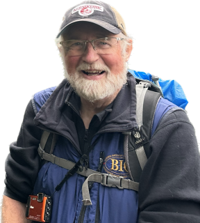 Most Interesting: Several aspects of the conference caught my attention: the wide range of topics covered that are crucial to effective coastal management; the low number of government employees, especially key policy and decision makers (Department of Fisheries and Oceans and Environment and Climate Change Canada were almost completely absent); the lack of urgency to address the big challenges such as climate change (time lines for action were not mentioned). Questions: I left the conference wondering why were there no public sessions aimed at ocean literacy? Where is the insurance industry in coastal management? Where is the discussion of cross border issues? Regarding coastal protection, where are the coastal geomorphology scientists in the discussion and, more importantly, in the advisory processes? In addition, I wondered why proceedings of the conference are not published? Contribution: Members of the EIUI research program and the Bay of Fundy Ecosystem Partnership (BoFEP) were busy at this biennial conference. Three oral presentations pertained directly to the work of EIUI and its affiliation with BoFEP, with the overall aim to understand the role of ocean information and ocean literacy in this era of climate change. One presentation shows our continued affiliation with the UN-GESAMP in its continued work to review and use information on key threats to ocean health in all aspects of marine environmental protection, from science to policy making and ocean management. The presentations and participation of EIUI members in the conference sessions highlighted the continued importance of research by EIUI on numerous ocean subjects.
Most Interesting: Several aspects of the conference caught my attention: the wide range of topics covered that are crucial to effective coastal management; the low number of government employees, especially key policy and decision makers (Department of Fisheries and Oceans and Environment and Climate Change Canada were almost completely absent); the lack of urgency to address the big challenges such as climate change (time lines for action were not mentioned). Questions: I left the conference wondering why were there no public sessions aimed at ocean literacy? Where is the insurance industry in coastal management? Where is the discussion of cross border issues? Regarding coastal protection, where are the coastal geomorphology scientists in the discussion and, more importantly, in the advisory processes? In addition, I wondered why proceedings of the conference are not published? Contribution: Members of the EIUI research program and the Bay of Fundy Ecosystem Partnership (BoFEP) were busy at this biennial conference. Three oral presentations pertained directly to the work of EIUI and its affiliation with BoFEP, with the overall aim to understand the role of ocean information and ocean literacy in this era of climate change. One presentation shows our continued affiliation with the UN-GESAMP in its continued work to review and use information on key threats to ocean health in all aspects of marine environmental protection, from science to policy making and ocean management. The presentations and participation of EIUI members in the conference sessions highlighted the continued importance of research by EIUI on numerous ocean subjects.
~ Peter G. Wells, Fellow, International Ocean Institute-Canada; Adjunct Professor, Marine Affairs Program, Dalhousie University
Overall, the conference highlighted the importance of understanding the functions and activities of people and information at interfaces with policy and practice in efforts to achieve effective coastal decision-making. A concept paper published in advance of the United Nations Conference held in Nice, France, 9-13 June 2025 emphasized this point: “a rigorous and inclusive science-policy interface that supports the co-design and co-delivery of science and knowledge and that works along diverse impact pathways to inform decision-making at all levels from local to global is essential.” In 1994, the first Coastal Zone Canada conference, held in Halifax, recognized the significance of this observation. That conference produced a notable suite of Calls to Action and recommendations, one of which urged equipping “all stakeholders with accurate and understandable scientific information as well as traditional knowledge.” Over thirty years later this recommendation remains decidedly relevant. Some progress has been made in strengthening coastal resilience and relationships due to the multidisciplinary, nature-based approaches that have been implemented recently. Greater attention is being given to Indigenous perspectives and scientific understanding of coastal areas has advanced. However, variation across the country has resulted in uneven outcomes and much more remains to address the many environmental and social challenges facing Canada’s extensive coastal areas. Maybe the next Coastal Zone Canada conference, to held in Waterloo, Ontario in 2027, could focus on how to speed up progress on implementing solutions to pressing coastal issues!
Coastal Zone Canada Conference Abstracts
Oral Presentations
Butler, M., McPherson, K., & Wells, P. G. Encouraging ocean and climate literacy within the Nova Scotia school system
Abstract: The “Ocean-climate nexus” explains the connection between the ocean and the atmosphere, and together the implications for climate change and associated weather phenomena. Climate change, an existential threat, is exemplified in the Atlantic Provinces by sea-level rise, increased coastal erosion, changing ocean ecosystems and extreme weather patterns. Only an ocean/climate literate society will understand and mitigate these stressors. Hence, the need exists for teachers and their students to be appropriately informed. To respond to this need, the International Ocean Institute-Canada, in collaboration with the Nova Scotia Department of Education and the Ocean Literacy Working Group of the Bay of Fundy Ecosystem Partnership, adopted the well established “Professional Development Day” format as the best option to introduce such a program locally. To date, two P.D. Days were delivered, the first on 23 March 2024, to 35 experienced teachers, primarily from the Halifax area; the second on 19 October 2024 to 35 teachers-in-training at Mount Saint Vincent University, one of five Nova Scotia universities with a Faculty of Education. The goal of each P.D. Day was to present ocean/climate information in a manner clearly understood by the non-specialist. An Educators Toolkit, designed by experienced teachers, provided ready-to-use and age-appropriate learning experiences. This was supplemented by hands-on demonstrations of classroom experiments and the provision of accessible resource material. This presentation describes the format of the P.D. Days delivered to date, the topics and speakers, resource material, and future objectives. Through this initiative, teachers and students are encouraged to become “change makers” in their communities.
Eisner, S., Harrison, H., Manuel, P., Kofahl, M., & Baxter, J. Squeezed from both sides: An analysis of legal mechanisms, judicial trends, and limitations in maintaining coastal access in Nova Scotia, Canada, with implications for future coastal management
Abstract: Nova Scotia’s coastline is valued by the public for a multitude of purposes, yet increasingly, public access to Nova Scotia’s coast is constrained by its continued reliance on informal arrangements for private land crossings, which are jeopardized by the impacts of climate change and changing land ownership patterns. Known as “Canada’s Ocean Playground,” Nova Scotia promotes itself as a place where coastal spaces exist for the benefit of present and future Nova Scotians. We argue that the shore is thus a public good, access to which is integral for the public to benefit. This paper lays out this argument by drawing on legal, planning, coastal zone management, and human ecology perspectives to explore the coastline, and by extension access, as a public good. Using two recent court cases, we demonstrate how Nova Scotia’s approach to managing coastal access is one of “governance through ownership.” In this model, primary responsibility for managing coastal access is vested in private coastal property owners. Governance through ownership is shown to promote social conflict, as private property owners become de facto gatekeepers to a public good in the public eye. The result is eroding coastal access as existing property rights are prioritized in civil courts over novel conceptions of collective rights of access. As such, Nova Scotia’s approach fails to manage coastal access as a public good. We conclude with a discussion of potential proactive provincial policies that would recognize access to the coast as an inherent extension of the coast as a public good.
Khan, J., Goerlandt, F., & Manuel, P. Advancing innovations in coastal spatial planning by exploring how decision support tools represent place-based knowledge systems in Nova Scotia, Canada
Abstract: Spatial planning is process that is essential for the transdisciplinary management of changing coastal environments. The process aims to influence the spatial distribution of activities in a way that balances environmental, economic and social needs. As community input becomes increasingly recognized for its vital role in decision-making, there is a growing need to explore how conventional decision support tools (DSTs) account for, and communicate place-based knowledge (e.g., Indigenous and Local Knowledge systems). Such knowledge systems enhance the contextual applicability of decisions that better reflect present and future uses of a place. This study explores the suitability of six Decision Support Tools (DST) used in spatial planning to collect and communicate place-based perspectives: Canada Marine Planning Atlas, participatory mapping, ArcGIS StoryMap, Marxan, the Marine Spatial Planning Board Game, and virtual reality. Through a scoping review and semi-structured interviews with spatial planners, marine and coastal researchers, and users who reside and/or work in coastal environments in Nova Scotia, key characteristics that make DSTs suitable for communicating place-based knowledge as well as tool design limitations are identified. Also identified are the rightsholder and stakeholder engagement, data collection, and communication stages of the spatial planning process at which each of the selected DST are most effectively applied. The results are meant to inform the design and use of DSTs in a way that better account for and serve local coastal users throughout the stages of the spatial planning process, thereby supporting informed and sustainable decision-making in the context of coastal planning in the province.
Legault, A., & Sherren, K. Acadian diaspora connections to Nova Scotia dykeland and tidal wetland landscapes
Abstract: French settlers first arrived in Mi’kma’ki in the early seventeenth century. To increase agricultural production, their descendants – the Acadians – drained the Bay of Fundy’s tidal wetlands using dykes and aboiteaux. From 1755 to 1758, thousands of Acadians were deported to British colonies and Europe, forming the Acadian diaspora. Today, approximately 364 km of Acadian dykes remain in New Brunswick and Nova Scotia. The Nova Scotia Department of Agriculture does not currently possess the ability to maintain and raise all dykes to withstand the projected impacts of a changing climate. Several coastal adaptation options have been proposed, including managed dyke realignment, which combines coastal retreat and tidal wetland restoration. Decision-makers are thus in the awkward position where they must not only decide which lands to protect and which lands to restore, but also who is a stakeholder and who is not. The purpose of this research is to determine whether Acadian diasporans (1) remain culturally linked to the Bay of Fundy dykelands, (2) are beneficiaries of ecosystem services co-produced with the Bay of Fundy dykelands, and (3) are stakeholders in managed dyke realignment decisions in the Bay of Fundy dykelands. Acadian diasporans were interviewed and surveyed at Grand-Pré National Historic Site and at the Congrès mondial acadien in August 2024. The results indicate that Acadian identity is complex, Acadian diapsorans are beneficiaries of non-material ecosystem services, and that Acadian diasporans are heavily divided over whether they believe they are stakeholders in managed dyke realignment decisions in the Bay of Fundy.
Legault, A., Toze, S., & Caron, I. Embedding climate change action in decision making by coastal municipalities
Abstract: As climate continues to change, extreme weather events are becoming commonplace. Although all levels of government in Canada have begun to introduce and implement policies to address climate change mitigation, so far these policies remain inadequate. Policy makers face substantial challenges in designing and implementing comprehensive policies. Often confronted by large volumes of information on climate subjects, they may have difficulty in evaluating the quality and deciding what counts as evidence to be presented to decision-makers. The uptake of relevant, credible evidence in policy processes to inform decisions about climate change adaptation remains limited in many jurisdictions. Municipal governments are directly impacted and must consider the impacts of climate change. In 2019, for example, the Halifax Regional Council unanimously declared a climate emergency. Few studies have investigated the ways in which information, evidence, and knowledge flow at science-policy interfaces in municipal government contexts. This research is identifying factors that enable or impede the uptake of evidence at the municipal level by focusing on the development and implementation of coastal climate adaptation policies. It aims to build a bridge between the policy makers who develop and implement policies and the researchers who produce knowledge on coastal climate adaptation. Four Canadian coastal municipalities will be the focus of case studies beginning with Halifax Regional Municipality. Using a transdisciplinary approach, our research questions are being co-constructed alongside the professional municipal staff. This presentation will describe the collaborative research design process and include preliminary results of a systematic literature review.
MacDonald, B. H., Soomai, S. S., & Wells, P. G. Understanding the functions and activities of science-policy interfaces is key to effective coastal and marine decision-making
Abstract: Coastal areas and communities, prominent at the land-sea interface in Canada, face numerous challenges, e.g., changes in environmental conditions, pressures on coastal uses and services, and vagaries of policies and politics. Governments at all levels may respond to these issues, but often slowly or inadequately. Why? What impedes the uptake of the large body of available evidence into policy decisions? For over two decades, the interdisciplinary Environmental Information: Use and Influence research program at Dalhousie University has been investigating barriers and enablers affecting the use of information in marine environmental decision-making. Working in collaboration with governmental, intergovernmental, and non-governmental organizations, this research is highlighting factors affecting the often-complex interactions of people, information, and issues at science-policy interfaces. For example, in an initiative to establish a coastal marine protected area, historical legacies of mistrust of government and misinformation influenced the planning processes. In another case, environmental non-governmental organizations filled pivotal roles as boundary organizations facilitating information exchanges among stakeholders. A third case revealed that stakeholder organizations, acting as coordinators, connectors, or information mediators, bridged government, academic, industry, and community groups in a network about marine renewable energy. In other cases, the format of information, e.g., technical reports, briefing notes, and factsheets, influenced knowledge mobilization by different audiences. Based on numerous case studies, this presentation will discuss the functions of science-policy interfaces to show why understanding information pathways can be instrumental in efforts to ensure that evidence is used in a timely manner in decision-making about coastal and marine conditions.
Margeson, K., Sherren, K., Manuel, P., Murphy, E., Stewart, I., & Smit, M. “The lake is nature too”: Exploring support for barrier removal and tidal river restoration in Atlantic Canada
Abstract: High modernist thinking during the 1960s-80s led to reliance on engineered solutions that perpetuated the idea that nature could be controlled and manipulated to serve industrial development. A surge of worldwide dam and causeway building throughout the mid-20th century means that many are now approaching the end of their functional lifespan. The effects of widespread dam and causeway construction continue to be far ranging, including siltation, blocked passage for migrating and spawning fish species, rerouted rivers and streams, and human development around modified rivers and reservoirs or head ponds. Unique to coastal contexts, many barriers were built across tidal rivers, that blocked tidal connectivity and reshaped coastal river landscapes. In this study, we explore the development of two dammed tidal river landscapes in Atlantic Canada (the Petitcodiac River in New Brunswick and Avon River in Nova Scotia). We are using mixed methods, including surveys and longitudinal media analysis, and employing Stephenson’s (2008) landscape cultural values model. Our objectives with this research are to: 1) Explore how experiences of the residents living along a restricted tidal river and estuary changed over time with causeway modifications; and 2) Investigate how the residents’ experiences influence their perceptions and understanding of tidal river restoration. While our findings are rooted in particular case study locations, the technique of exploring human practices and natural processes as a continuum of dynamic action may be applied to other coastal communities facing landscape adaptation involving human and environmental trade-offs in the face of climate change.
Martinez Calderon, D., MacDonald, B. H., & Manuel, P. Local voices, marine choices: Reimagining participation of coastal communities in Marine Spatial Planning
Abstract: Public participation is essential for the successful management of coastal-marine environments. In this context, Marine Spatial Planning (MSP) has emerged as an influential approach to promote sustainable marine governance. By 2023 about 126 countries had embraced MSP in some form, including Canada. However, social science scholars criticize stakeholder engagement in MSP for often being tokenistic, especially of community-level stakeholders. To address this critique, we conducted research to develop a place-based decision-making framework to foster meaningful local stakeholder participation in MSP, using the Scotian Shelf-Bay of Fundy planning area as a case study. Through a mixed-methods approach combining a literature review, expert interviews (local and global), and community focus groups, this study explores three key dimensions: 1) theoretical foundations for reimagining community-oriented MSP, 2) practical elements that facilitate meaningful local engagement, and 3) contextual factors that influence public participation in the study area. The study examines how to integrate the local component into MSP to develop more inclusive processes that reflect the perspectives, interests, and needs of coastal communities. The result is a framework with three key components: 1) stakeholder engagement and community planning principles, 2) locally sensitive practices for effective engagement about who should participate, how, when, and at what level, and 3) context-appropriate factors that shape public participation in the Scotian Shelf-Bay of Fundy planning area, including cultural, institutional, political, and socioeconomic factors. This presentation will demonstrate that application of the framework will strengthen coastal-marine management by offering an evidence-based approach to enhance participation of coastal communities in MSP.
Watson-Wright, W., & Wells, P. G. The United Nations Joint Group of Experts on the Scientific Aspects of Marine Environmental Protection (GESAMP): An ocean and coastal science-policy interface standing the test of time
Abstract: Established in 1969, GESAMP is a group of independent scientific experts providing advice to the UN system on scientific aspects of marine environmental protection. It is currently sponsored by ten UN entities. GESAMP conducts and supports marine environmental assessments; undertakes in-depth studies, analyses and reviews of specific marine topics; and identifies emerging issues impacting ocean health. GESAMP’s core group currently consists of 17 independent scientific experts, drawn globally from many relevant disciplines. Studies and assessments are carried out by dedicated working groups, members of which come from the broader GESAMP network. To date, GESAMP has addressed a wide range of marine topics and produced 52 in-depth studies, 11 of which focus specifically on the coastal zone. The studies have involved more than 500 scientists from 50+ countries. GESAMPs core work is published as peer-reviewed reports in the on-line GESAMP Reports and Studies Series, and in scientific journals. Working Group 1’s hazard assessments of bulk chemicals carried by ships provide key advice to policy makers and regulators within the International Maritime Organization, working under various international regulations and codes. The group’s scientific output on key topics, e.g., plastics and chemicals at the air-sea interface, is used widely by the UN, national governments, intergovernmental groups, non-governmental groups and the scientific community, one paper having been cited approximately 2000 times. Given escalating concerns about the ocean, both as a recipient of impacts as well as in its role in planetary climate change, GESAMPs assessments and advice will continue to be needed now and well into the future.
Webster, A., & Manuel, P. Living with the seafloor: Exploring place-based knowledge of benthic spaces in the Minas Basin, Nova Scotia
Abstract: People who live at the coast, and who work in and use coastal and marine spaces for recreation have unique knowledge of the ocean, including the seafloor. Usually not visible from the surface or easy to reach, exploring, understanding, and using the seafloor requires well-honed skills, frequently used by residents of coastal communities. However, local, place-based understanding of benthic spaces are often overlooked in benthic mapping, despite its importance for informing decision-making about the use and protection of the coastal and marine environment. Exploring and documenting the place-based knowledge accumulated by residents of coastal communities can contribute to a holistic understanding of benthic spaces and the connection of coastal communities with the seafloor. Using participatory mapping and semi-structured interviews with recreational and commercial users, this research explores local uses, perspectives, and interpretations of coastal and marine spaces, particularly the benthic environment of the Southern Bight of the Minas Basin. The mapping sessions and interviews provided insight into the geography of the Minas Basin seafloor, and the social, cultural, ecological, and economic significance of benthic spaces in the Minas Basin. Mapping tied activities, observations, and experiences to places, as well as documented observed changes. The results from this study can contribute to a holistic understanding of the seafloor, as well as provide insights to understand attachment to place in a changing coastal landscape. This knowledge can be used to support resilient coastal culture and livelihoods, enhance local decision-making, and inform protection strategies for benthic habitats in the Minas Basin.
Wells, P. G., Percy, J., Daborn, G., & Butler, M. Addressing environmental issues in the Bay of Fundy: An overview of BoFEP and its next steps
Abstract: This talk describes the early beginnings, accomplishments, recent activities, and new directions of the Bay of Fundy Ecosystem Partnership (BoFEP), as it reflects on 30 years of work since 1995. BoFEP is both an on-line and in-person information and knowledge network for the Bay of Fundy’s unique marine ecosystems. Its major activities have been its Fundy Tidings newsletter, website, biennial science workshop, and working groups. Its institutional challenges, e.g., volunteers and funding, are numerous, as its current participants bring attention to issues as wide ranging as climate change, coastal erosion, sustainable fisheries, and development pressures along the Bay’s long and changing coastline. BoFEP’s principal focus for the future will be on communication, outreach, education, conduct of working groups, and advocacy with its broad network of partners. It has begun to develop ways to enhance ocean and climate literacy in the schools and communities around the Bay. BoFEP welcomes, indeed it needs, participation of everyone concerned with the long-term health of the Bay and its watersheds in a rapidly changing world.
White, K., Syliboy, A., Amiro, L. Fulton, L. Khan, J., Manuel, P., & Aporta. Following the flow of water: An atlas for Mi’kmaq marine knowledge
Abstract: This presentation explores the collaboration between The Confederacy of Mainland Mi’kmaq (CMM) Department of Aquatic Resources & Fisheries Management and the Ocean Frontier Institute’s Benthic Ecosystem Mapping and Engagement (BEcoME) project, to develop the Mi’kmaw Marine Atlas. Using ESRI ArcGIS StoryMap, the Atlas combines spatial mapping and narrative storytelling from the uplands to the seafloor of the inner Bay of Fundy. We sought to provide a revisionist illustration of knowledge, information, and data to reflect the holistic understanding of the waterways flowing in and out of the inner Bay of Fundy and the relationships with the Mi’kmaq, who have communal knowledge spanning over 12,000 years as stewards of the land and water. It incorporates past and current environmental work in the area while weaving Mi’kmaw Knowledge and scientific understanding throughout. The Mi’kmaw Marine Atlas aims to serve as a resource for Mainland Mi’kmaw communities in supporting their planning, education, and knowledge-sharing. This project emphasizes collaboration, the prioritization of cultural knowledge, and ethical data-sharing, ensuring that Indigenous perspectives are central to the interpretation and dissemination of environmental information. The presentation highlights the shared efforts of The CMM and BEcoME in documenting community engagement and fostering a culturally informed approach to data sharing. Through this partnership, our understanding of the inner Bay of Fundy’s marine environments has deepened in a manner that honors Mi’kmaq traditions and contributes to the next seven generations.
Posters
Cooney, G., Westhead, M., & Manuel, P. Conservation standards as a conservation planning framework for coastal management: A case study on the Inner Bay of Fundy conservation plan process
Abstract: The Conservation Standards (CS) are a prescribed set of steps, practices, and principles for conservation planning. The literature about using CS for global conservation planning is limited, however. A conservation planning initiative for the Inner Bay of Fundy (IBoF) region of Atlantic Canada has been underway since March 2020. This initiative, led by Environment and Climate Change Canada’s Canadian Wildlife Service and facilitated by Global Conservation Solutions, is using the CS framework. The participants meet in online workshops and follow the steps of the CS. Since startup, over 100 participants from government, non-governmental organizations, industry, Indigenous organizations, and academia have participated in 42 workshops. The initiative is still ongoing. This paper reports on the challenges and successes of the CS as a conservation planning framework, using the IBoF Conservation Plan process as a case study. A survey of 16 workshop participants provided insights to the process. Successes of using the CS include knowledge-sharing, relationship-building, and enhanced understanding of the CS as a conservation planning tool. Challenges include engagement and inclusion of all relevant stakeholders and rightsholders and a lack of clarity about a timeline for outputs. Recommendations to amplify successes include establishing smaller groups within workshops to help increase efficiency and comfort and maintain participation and interest among the participants. Recommendations to address challenges include increased transparency and communication about desired outputs and timelines. The lessons learned from this case study can inform the final results of the IBoF Conservation Plan and the use of the CS framework in other initiatives.
Sherren, K., Manuel, P., Tuihedur Rahman, H. M., Wells, E., Rapaport, E., & Van Proosdij, D. Reimagining the shore: 5Rs for a good coastal life
Abstract: Nature-based coastal adaptation is a subset of nature-based approaches to environmental planning and management that has, to this point, focused on the physical aspects of managing coastal risks: what our coastal protections are made of or where we put things that are in the way of harm. In our collaborative interdisciplinary work we have been reimagining nature-based coastal adaptation to start with first principles: how we think about the coast and what makes a good coastal life. In a nature-based approach our shared sense of what is good and possible, also known as the social imaginary, needs shifting before any physical material, or plans, or rules. We present a new nested framework for thinking about nature-based coastal adaptation that proposes a new relationship with the shore using five words starting with R: Reimagine, Reserve, Relocate, Restore, Reinforce. We use the nature-based adaptation option of managed dyke realignment in the Bay of Fundy agricultural dykelands to illustrate the utility of the framework in practice.
Workshop
Manuel, P., Harrison, H., Winkler, N., Kofahl, M., & Guptil, B. Coastal access workshop: Building strategies and relationships for connecting with the shore
Abstract: In this two-part workshop, we will use presentations and facilitated small group and plenary discussions to explore the characteristics, extent, and legal context of coastal access in Atlantic Canada, and hear stories from diverse perspectives. We’ll identify local challenges and co-develop strategies for building relationships and improving access to the shore. Outputs will be consolidated into a report and feature article, with the goal of forming an Atlantic coalition on coastal access. The coast is a public good—essential for work, provisioning, and recreation—and shapes the identity of coastal communities. Yet access is becoming more difficult. Over 85% of the coastline in Nova Scotia and Prince Edward Island is privately owned, and much of New Brunswick’s coast is also private. A lack of public access often forces people to cross private land. Increasing development and subdivision threaten traditional access, while climate change damages the coast, access routes, and infrastructure. Given these challenges, how can communities and the public maintain and enhance coastal access? In Part 2, we will build from the presentations and discussions in Part 1 to explore building relationships and strategies for connecting with the shore.
Authors: Jumanah Khan, Alexandre Legault, Bertrum MacDonald, Patricia Manuel, Keahna Margeson, Daniel Martinez Calderon, Alison Webster, and Peter Wells
Image credits: Coastal scene at top of blog post – P. G. Wells; photographs in the two conference collages – Members of the Environmental Information: Use and Influence and Marine Spatial Planning research teams
Tags: Information Use & Influence; Marine & Ocean Issues; Public Policy & Decision Making; Science-Policy Interface
